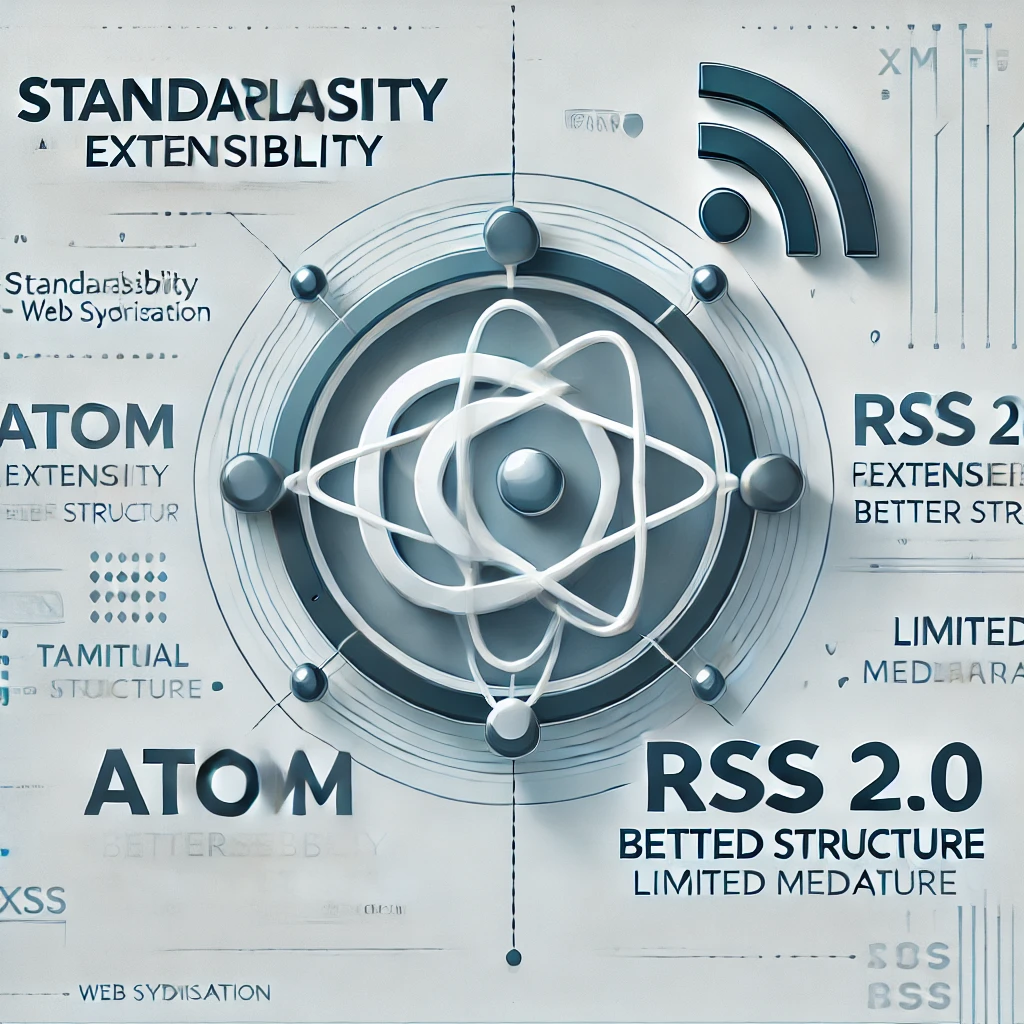Why Choose Atom Instead of RSS 2.0?
Contents

1. Standardization and Extensibility
Atom was developed by the Internet Engineering Task Force (IETF) and released as a standard in RFC 4287, meaning it was built through open collaboration, drawing on lessons learned from the limitations of RSS. Unlike RSS 2.0, which does not have a strict governing body, Atom adheres to a formal standard, making it more predictable and consistent across implementations.
Additionally, Atom supports extensibility more robustly, allowing for custom namespaces and extensions without breaking compatibility, which can be critical for developers who need a flexible syndication format that accommodates evolving needs.
2. Better Content Structure and Control
Atom addresses several limitations of RSS 2.0 by defining a more structured approach to syndication. Atom introduces fields such as:
- content: Allows for rich, HTML-formatted content with clear indication of content type (plain text, HTML, or XML).
- summary: Provides a concise overview without limitations on content size.
- updated: Offers a clear timestamp of the last content update, making it easier for feed readers to manage and display updates accurately.
These elements provide content creators and developers with better control over how their content appears to readers.
3. Atom's Explicit Date and Time Fields
RSS 2.0 has limitations in handling time and date formats consistently. While it uses the `pubDate` tag to indicate when an item was published, there is no standard way to indicate when an item was last updated. Atom, on the other hand, includes both the `published` and `updated` tags, providing clear timestamps for both publication and modification. This distinction is crucial for applications that require precise content versioning, enabling better tracking of updates and revisions.
4. Support for I18N (Internationalization)
Atom was designed with internationalization in mind. Its use of Unicode allows for greater flexibility in content encoding, making it suitable for global applications with multilingual requirements. Atom's encoding is set to UTF-8 by default, while RSS 2.0 has no required character encoding, making Atom the more reliable choice for feeds that need to support diverse character sets.
5. Consistent MIME Type
Atom is served with a clear MIME type (`application/atom+xml`), while RSS 2.0 feeds are generally served as `text/xml` or `application/rss+xml`. This consistency is beneficial for developers because it ensures that Atom feeds are more easily recognized by various software and parsing tools. The dedicated MIME type allows for better feed detection, especially when integrating feeds into larger applications or third-party services.
6. Built-in Support for Feed Metadata
Atom includes metadata elements like `author`, `contributor`, `generator`, and `icon`, allowing publishers to provide rich contextual information for each feed. This additional metadata can enhance the user experience, giving readers clearer information about the authorship and context of content. In RSS 2.0, metadata capabilities are more limited and typically require the use of custom extensions, which can lead to compatibility issues.
7. Atom’s Flexibility with Links and Enclosures
Atom allows multiple `link` elements in each entry, which means an item can have links to various content types, such as an HTML page, an XML file, or even media files. In RSS 2.0, there is only one enclosure allowed per item, limiting the ways multimedia or alternate content formats can be linked. Atom's multiple link capabilities make it a versatile option for applications that need to offer various types of media content in a single feed entry.
In Summary
While RSS 2.0 has been a mainstay for web syndication and remains widely supported, Atom provides a more modern, flexible, and standards-based alternative. Its robust metadata support, strict standards, and content formatting flexibility make Atom a preferred choice for many developers and content providers who seek greater control and extensibility in their syndication efforts. For applications that require precise time tracking, internationalization, and content versatility, Atom stands as a reliable, future-ready option over RSS 2.0. Back to Main Article